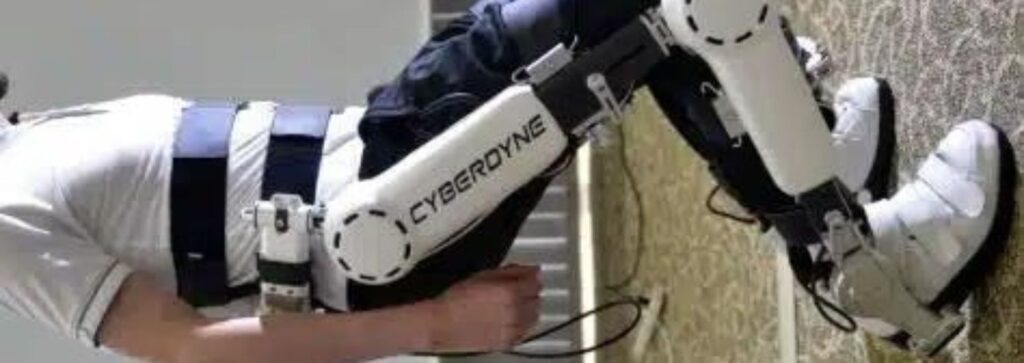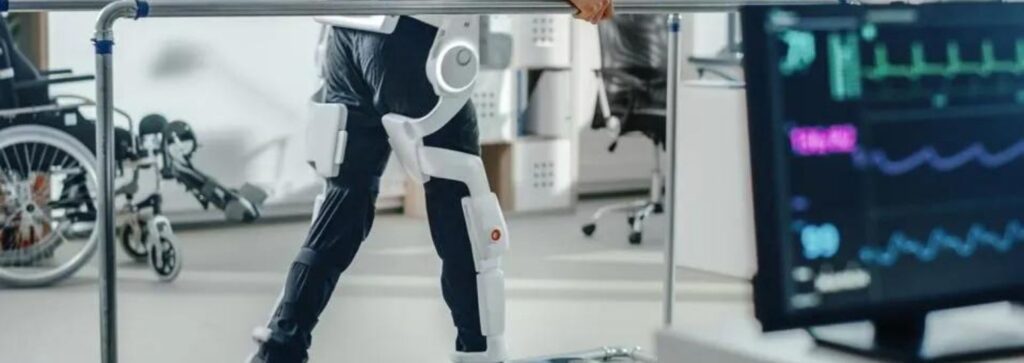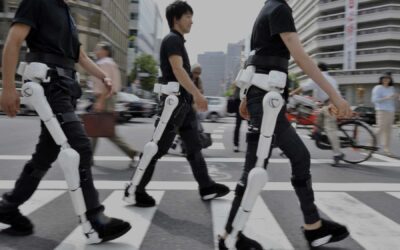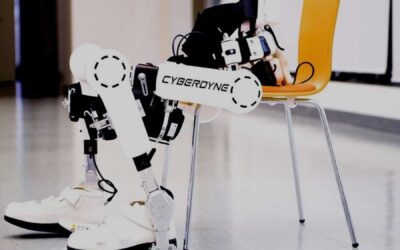The Hybrid Assistive Limb, HAL®– is the world‘s first technology that enhances and regenerates the wearer’s physical functions according to the wearer’s intentions. Because of this feature, it is also called The Wearable Cyborg™
Plans for HAL in neuro patients

A person’s brain processes the motion first when they make a physical movement. Thinking “I want to walk” causes the brain to send nerve impulses to the muscles that instruct them to move.
The ability to quickly recognise and comprehend high-speed signals is essential for “Wearable Cyborg™ Hal®”
Send
The muscles contract after they get the impulses.
Every muscle in a healthy body can receive instructions from the brain and contract with the desired force and speed.
The brain uses several kinds of information from the entire body to regulate many muscles in order to generate complicated physical actions like walking. An implementation of this concept resulted in the creation of the “Wearable Cyborg™ Hal®.”
Read
HAL interprets signals.
Brain-sent impulses to muscles leak onto the skin’s surface as BES, or extremely weak signals. By affixing specially designed detectors to the wearer’s skin, HAL® can read BES data. by combining different kinds of data. HAL® detects the kind of movement the wearer plans to do.
Moves
As intended by the wearer, Cyberdyne HAL moves.
HAL® manages its power units based on the signals that are identified. With the help of this feature, HAL® can support the wearer’s movements as intended by applying more force than usual.
Cyberdyne Relief for Neuro Patients
Using a combination of the Cybernic Voluntary Control System, which detects BES and moves in accordance with the wearer’s intent, and the Cybernic Autonomous Control System, which replicates human motions based on basic movement patterns in the absence of BES, HAL® assists the wearer with their movements. This cutting-edge technology serves as the foundation for Hal®.

The human brain processes information at a very fast pace, controlling muscles and joints.In order to use its power unit during neurodegenerative illness, HAL®, like humans, is able to digest a wide variety of information instantaneously. Hal® moves in tandem with the wearer’s movements as they begin, enabling it to support their movements.
Feedback
The Brain Learns Motion-
The movement of the muscles is only one aspect of the human body’s mobility system. Following neurodegenerative illness, the brain validates the kind of signals the body delivered and how the body responded to them.
The brain receives the sensation “I could walk!” once Hal® has properly aided in walking actions. The brain may progressively learn how to send the impulses required for walking in this way.
This feedback loop enables a physically challenged individual, such as a patient with neurodegenerative illness, to take “the important first step” toward walking without the aid of Hal®. Hal® is the only robot capable of giving the brain the proper movement instructions.
Rehabilitation from neuro-diseases
Patient Testimonial-
In 2013, Rody was involved in an automobile accident that left him with levels C6 and C7 spinal cord injuries. It was this injury that made it difficult for him to walk and stand. But all changed in 2019 when he began receiving Cyberdyne Lower Limb therapy after being confined to Pusat Rehabilitation at PERKESO due to a neurodegenerative condition. He received Cyberdyne treatment for six months, and now he can stand and walk with a walker once more. The fact that Rody is returning to work is even more thrilling!
Connect with us at https://rehabmodalities.com/ to learn more about our awesome mobile journey with HAL®



